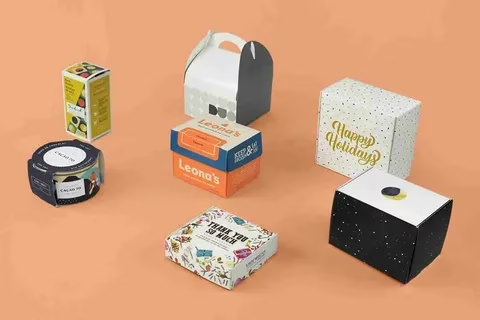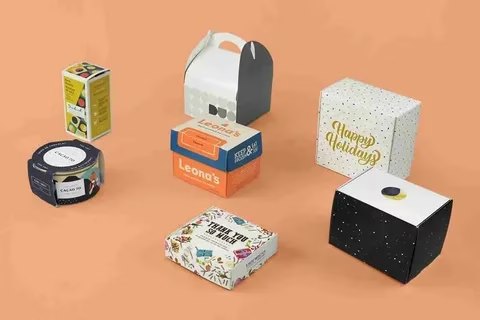In today’s fast-paced retail landscape, where consumer attention is limited and competition is fierce, packaging is more than just a box—it’s a brand experience. Custom retail packaging plays a critical role in shaping buyer perception, enhancing shelf appeal, and driving repeat business. But how can a business know whether its packaging is actually working? How do you measure the success of something as seemingly intangible as a box?
This guide explores practical, data-driven ways to measure the success of retail packaging—especially for brands using custom solutions, distributing wholesale, or operating in competitive markets like the USA.
1. Sales Performance Before and After Packaging Change
One of the most direct ways to measure the success of your custom retail packaging is to compare your sales data before and after a packaging update. If a packaging redesign results in a measurable increase in product sales or improves upsell performance, it’s a strong indicator of packaging success.
What to Track:
- Units sold per week/month
- Revenue per product SKU
- Sales conversion rates (especially online)
- Repeat purchase behavior
Tip: Try A/B testing your old packaging vs. your new one in a controlled retail or eCommerce environment. This lets you isolate the impact of packaging alone.
2. Customer Feedback and Unboxing Experience
In the age of social media, the unboxing experience has become a powerful metric. Consumers not only share their purchases online but also comment on the packaging quality, design, and usefulness. Positive feedback—or negative criticism—provides immediate insight into how your retail packaging is being received.
How to Collect Feedback:
- Post-purchase surveys
- Social media listening (Instagram, TikTok, YouTube unboxings)
- Reviews on platforms like Amazon, Etsy, or your own website
Custom retail packaging should create a memorable and consistent brand experience, and customers often reward attention to detail.
3. Return Rates and Damage Claims
If your product is getting damaged during shipping or arriving in poor condition, your packaging is failing one of its most basic jobs: protection. Tracking return rates and damage claims is a critical step, especially for companies that ship wholesale or operate on platforms like Amazon, where customer satisfaction is crucial.
Key Indicators:
- Frequency of returns related to packaging issues
- Customer service complaints about damaged goods
- Extra costs for replacements and refunds
Investing in durable custom packaging reduces these costs and boosts customer satisfaction, especially for businesses operating at scale across the USA.
4. In-Store Visibility and Shelf Impact
For physical retail, the ability of your packaging to attract attention is vital. This is particularly important for products sold through wholesale distribution in large stores or chains, where hundreds of competing items surround your product.
Ways to Measure Shelf Success:
- Eye-tracking studies or in-store behavior analytics
- Planogram compliance (for large retailers)
- POS (point-of-sale) display performance
- Sales lift in retail chains post-packaging update
Custom packaging that “pops” visually can boost impulse buys and help build brand recognition in high-traffic environments.

5. Brand Recall and Recognition
Strong packaging boosts brand visibility and customer loyalty. One of the less obvious but powerful ways to measure packaging success is through brand recall. This can be done through customer surveys or informal brand recognition tests.
What to Ask Customers:
- “Can you describe our product packaging?”
- “What colors or logos do you associate with our brand?”
- “Would you recognize our product on a store shelf?”
In the USA, where brand loyalty is often based on emotional connection and familiarity, consistent and unique custom retail packaging can create a lasting impression.
6. Sustainability and Eco-Friendliness
Increasingly, customers care about the environmental impact of packaging. If your custom packaging uses recyclable, biodegradable, or minimal materials, this can become a selling point—and a measurable success metric.
What to Track:
- Customer feedback on sustainable packaging
- Reduced shipping weight and cost
- Certifications or eco-labels
- Reduced waste returns from damaged items
Brands that promote sustainable packaging in their marketing often gain a competitive edge in environmentally-conscious markets like California and parts of the USA.
7. Cost Efficiency and Scalability
Measuring success isn’t just about aesthetics or branding—custom retail packaging must also be cost-effective and scalable, especially if you’re producing wholesale quantities.
Metrics to Analyze:
- Cost per unit (packaging materials, printing, assembly)
- Labor time to pack products
- Storage and transportation efficiency
- Waste from over-packaging or misprints
If you can improve your packaging process without sacrificing quality or appeal, that’s a win for your bottom line.
8. E-Commerce Compatibility
With online shopping dominating retail, packaging also needs to be optimized for eCommerce. This means ensuring your products survive shipping, fit into standard box sizes, and maintain visual appeal on screens.
E-Commerce Packaging KPIs:
- Shipping damage claims
- Packaging fit for standard carriers (USPS, UPS, FedEx)
- Unboxing reviews on eCommerce platforms
- Fulfillment center feedback (e.g., Amazon FBA)
Good eCommerce packaging is not only protective—it also enhances perceived value, a critical factor in high-end custom retail packaging.
Final Thoughts: Packaging as a Strategic Asset
Measuring success with retail packaging requires a blend of data, customer feedback, and long-term brand thinking. While beautiful design can win initial attention, true success comes from packaging that:
- Converts browsers into buyers
- Builds brand loyalty
- Reduces costs and damage
- Scales efficiently for wholesale
- Supports sustainability
- Enhances visibility in physical and online retail
Whether you’re a startup exploring your first box design or a seasoned brand selling across the USA, investing in smart, strategic custom retail packaging pays off. Don’t treat it as an afterthought—treat it as a competitive advantage.







